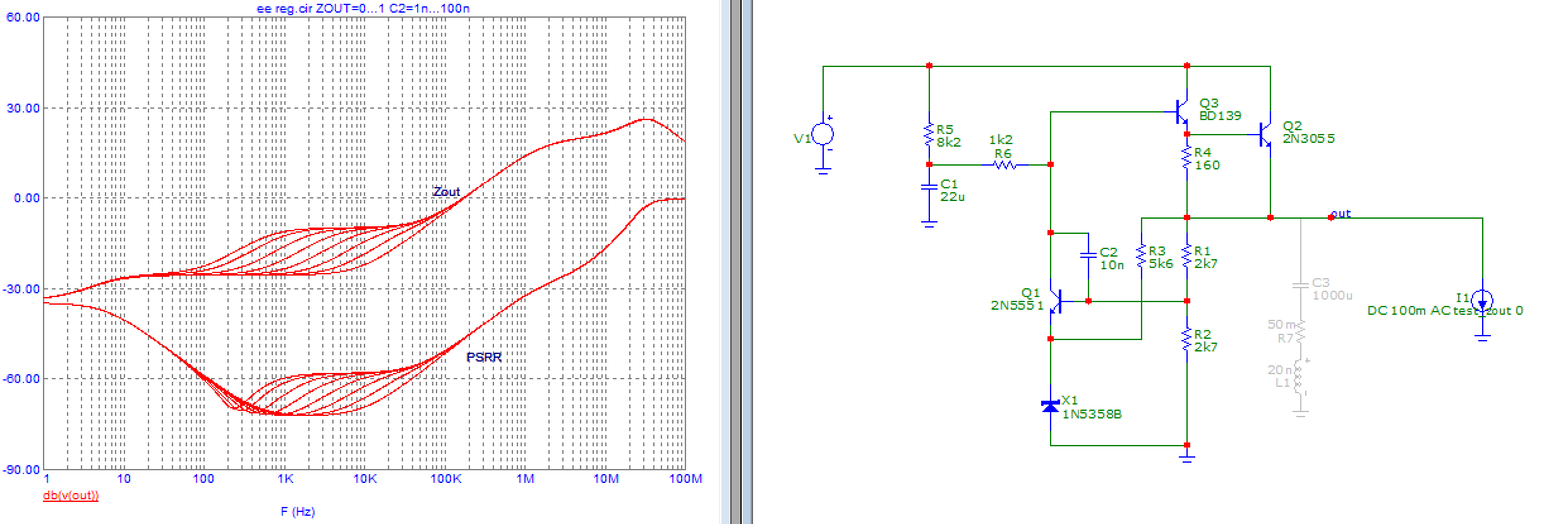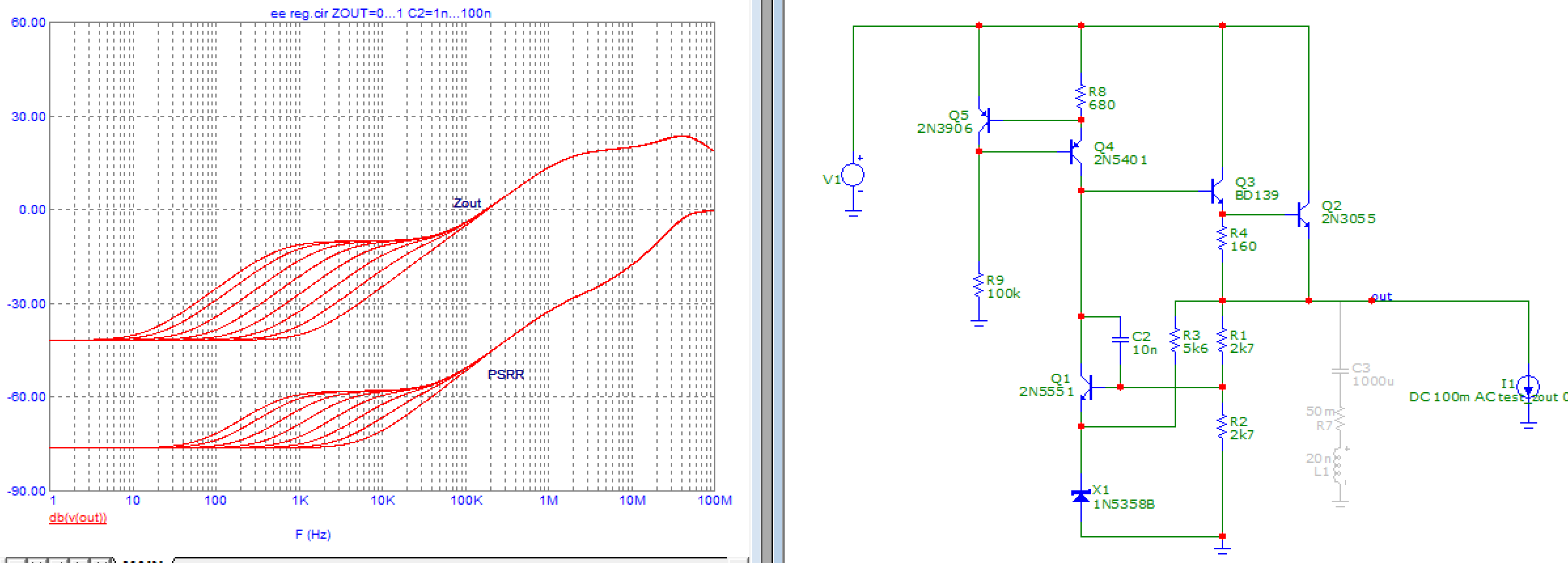I have an old amplifier that was home-built by someone, and I'm trying to reverse-engineer the power supply (for a start) to understand how it works, and to educate myself.
However, I cannot get the supply to regulate, the simulator is showing very odd behavior that I do not understand. The reverse-engineered circuit looks as follows:
D2 is (I believe) a 22 V Zener (this part is marked as 1N969B), and it looks like this is used to set the emitter of Q1 to a stable voltage. R5/R6 (the PCB includes a pot as well) then puts about half the output voltage on the base of Q1.
If the output is high I assume Q1 activates, so that the Darlington pair Q2/Q3 deactivates to regulate the output down. I measured the input voltage to be around 47 V. I haven't measured the output voltage (the board is removed from the amp), but I would expect this to be about twice the Zener voltage of D2, right?
The simulator disagrees with me however, there is no regulation at all, and for reasons beyond my understanding it shows over 500 mA current through D2, the emitter of Q1, and the base of Q1, and then this current just disappears into nowhere. R5, R6 and C4 show no current at all.
Does this circuit look familiar to anyone, and does my understanding as described above make sense, or is it completely wrong?
Note: as to the parts, I'm unsure about the value of C4, but it looks like a decoupling cap for the transistor.
Also, the whole of R1, R2, and C2 totally doesn't make sense to me. C2 looks like a cap, and is marked as "22/100V", and includes polarity markings, so it has to be a polarized capacitor.



